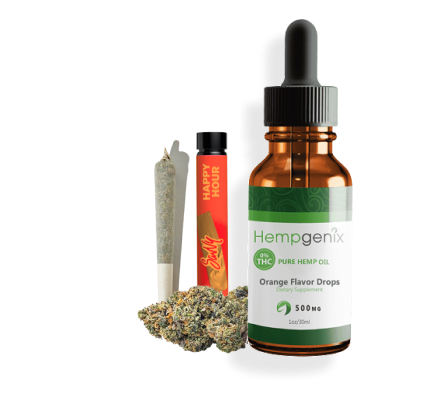Medical marijuana has gained popularity as a treatment for various health conditions. For those considering this option, it’s important to understand the basics before starting. Knowing what to expect can help patients make informed decisions about their care.
Medical marijuana works by interacting with the body’s endocannabinoid system to produce therapeutic effects. The two main compounds in cannabis, THC and CBD, can help manage symptoms like pain, nausea, and anxiety. Different strains and products offer varying ratios of these compounds, allowing for personalized treatment plans.
Getting started with medical marijuana involves a few key steps. Patients should talk to their doctor about whether it’s right for their condition. If approved, they’ll need to obtain a medical marijuana card. It’s wise to start with low doses and gradually increase as needed. Keeping a journal of effects can help track progress and find the most effective treatment.
Understanding Medical Marijuana
Medical marijuana uses cannabis plants to treat health issues. It contains compounds that affect the body and mind. Learning about its parts and effects helps patients use it safely.
Definitions and Key Terms
Medical marijuana refers to cannabis used for health reasons. The main parts of the plant are:
- Flower: The buds smoked or vaporized
- Leaves: Sometimes used in edibles
- Stems and seeds: Not usually used medically
Common forms include:
- Dried flower
- Oils
- Tinctures
- Edibles
- Topicals
Patients may hear terms like indica, sativa, and hybrid. These describe different types of cannabis plants. Each type can have different effects on the body.
Cannabinoids and Their Effects
Cannabinoids are chemicals in cannabis that affect the body. The two main ones are:
- THC: Causes the “high” feeling and may help with pain and nausea
- CBD: Doesn’t cause a high but may reduce anxiety and inflammation
Cannabis can impact many body systems:
• Brain: May change mood and thinking • Nerves: Could reduce pain signals • Immune system: Might lower inflammation
Effects vary by person. Patients should start with low doses and increase slowly. This helps find the right amount for their needs.
Legal Considerations
Medical marijuana laws vary across the United States. Patients need to understand both federal and state regulations, qualifying conditions, and the process for obtaining a medical marijuana card.
Federal Vs. State Laws
Medical marijuana is legal in many states, but remains illegal at the federal level. This creates a complex legal landscape. State laws differ on allowed forms of cannabis. For example, Minnesota permits medical marijuana in liquid, pill, or vaporized form, but smoking is not allowed.
Patients should be aware that federal law prohibits transporting marijuana across state lines, even with a valid medical card. Employment and housing rights may also be affected by marijuana use, as some employers and landlords follow federal guidelines.
Qualifying Conditions
Each state with a medical marijuana program has its own list of qualifying conditions. Common qualifying conditions include:
- Chronic pain
- Cancer
- Epilepsy
- Multiple sclerosis
- PTSD
Patients must have a diagnosed condition on their state’s list to be eligible for a medical marijuana card. Some states allow doctors to recommend cannabis for any condition they believe it may help, while others have more restrictive lists.
Obtaining a Medical Marijuana Card
The process to get a medical marijuana card typically involves:
- Confirming eligibility based on state law and qualifying conditions
- Obtaining a recommendation from a certified medical marijuana doctor
- Registering with the state’s medical marijuana program
- Paying any required fees
Processing times and card validity periods vary by state. Some states require patients to renew their cards annually. Caregivers may also need to register if they will be assisting a patient with obtaining or using medical marijuana.
Methods of Medical Marijuana Consumption
Medical marijuana can be used in several ways. Each method has its own pros and cons. The best choice depends on the patient’s needs and preferences.
Smoking and Vaporizing
Smoking is a common way to use medical marijuana. It involves burning dried cannabis flower and inhaling the smoke. This method works fast, but it can irritate the lungs.
Vaporizing is a safer option. It heats the cannabis to release active compounds without burning. Vaporizers come in different types, from small pens to larger desktop units.
Both methods allow quick relief. Effects can be felt within minutes. This makes them good for acute symptoms like pain or nausea. Dosing can be tricky at first, so patients should start slow.
Edibles and Tinctures
Edibles are food products infused with cannabis. They come in many forms like gummies, chocolates, and baked goods. Effects take longer to start but can last several hours.
Tinctures are liquid extracts. They’re taken under the tongue or mixed into drinks. They act faster than edibles but slower than smoking.
Both options are discreet and don’t involve inhaling. They’re good for long-lasting relief. Dosing is more precise, but effects vary based on factors like metabolism.
Topicals and Patches
Topicals are creams, balms, and oils applied to the skin. They’re used for localized relief of pain and inflammation. Topicals don’t cause a “high” feeling.
Cannabis patches work like nicotine patches. They deliver a steady dose through the skin over time. They’re useful for consistent symptom management.
These methods are good for skin conditions or muscle pain. They’re easy to use and don’t affect the whole body. Effects can last for hours, making them useful for chronic issues.
Benefits and Risks
Medical marijuana has both potential upsides and downsides. Patients and doctors need to weigh these carefully before starting treatment.
Therapeutic Uses
Medical cannabis may help treat several conditions. It can ease chronic pain and muscle spasms in multiple sclerosis. Some patients use it to reduce nausea from chemotherapy.
Cannabis may also improve appetite in people with HIV/AIDS. It might lessen anxiety, PTSD symptoms, and sleep problems.
Epilepsy patients, especially children, have found relief from seizures with CBD oil. Glaucoma sufferers report lower eye pressure with marijuana use.
More research is needed, but early results look promising for these and other uses.
Side Effects and Contraindications
Like any medicine, medical marijuana can cause side effects. Common ones include:
- Dizziness
- Dry mouth
- Increased heart rate
- Slower reaction times
- Changes in mood
Smoking cannabis may irritate the lungs. Edibles can take hours to work, risking overdose.
People with heart problems should be careful. Pregnant women should avoid marijuana. It may harm brain development in teens.
Some medications interact badly with cannabis. Patients should tell their doctor about all drugs they take.
Long-term Implications
The long-term effects of medical marijuana are not fully known. Some studies suggest regular use may affect memory and thinking skills.
Heavy use might lead to dependence in some people. Stopping suddenly can cause withdrawal symptoms like irritability and trouble sleeping.
There’s debate about whether marijuana is a “gateway drug” to harder substances. Most medical users don’t go on to abuse other drugs.
More research is needed on how medical cannabis affects people over many years. As laws change, scientists hope to learn more.
Patients should discuss ongoing use with their doctors. Regular check-ups can catch any developing issues early.
Dosage and Titration
Starting medical marijuana requires careful dosing and gradual adjustments. Finding the right amount takes time and patience.
Starting Doses
Low doses are best when beginning medical marijuana. Many doctors suggest starting with 2.5 to 5 mg of THC. For CBD, a common starting dose is 5 to 10 mg. Some patients may need even less.
It’s smart to start with one dose per day. Take it in the evening to see how it affects sleep. Keep a log of effects and side effects.
Different forms of marijuana have varying onset times:
- Inhaled: 5-10 minutes
- Sublingual: 15-45 minutes
- Edibles: 30-120 minutes
Adjusting Dosage Over Time
Gradually increase doses every few days if needed. Go up by small amounts, like 1-2 mg of THC or 5 mg of CBD. This slow approach helps avoid unwanted effects.
Pay attention to how you feel. Stop increasing when you get the desired relief. There’s no need to take more than necessary.
Some people find success with microdosing. This means taking very small amounts multiple times per day. It can provide benefits without strong psychoactive effects.
Remember, everyone responds differently to marijuana. The right dose for one person may not work for another. Be patient and work closely with your doctor to find your ideal dosage.
Interaction With Other Medications
Medical marijuana can interact with various medications. It’s important to talk to a doctor before starting cannabis treatment.
Cannabis may affect how the body processes certain drugs. This happens because of enzymes in the liver that break down both cannabis and other medications.
Some key interactions to be aware of:
- Blood thinners: Cannabis may increase bleeding risk
- Sedatives: Marijuana can enhance drowsiness
- Antidepressants: Cannabis might alter their effectiveness
Patients taking opioids should be cautious. Cannabis could change how opioids work in the body.
It’s crucial to inform all healthcare providers about cannabis use. This helps avoid potential drug interactions.
A doctor or pharmacist can check for specific interactions with current medications. They may need to adjust dosages or recommend alternative treatments.
Patients should never stop or change medications without professional guidance. Careful monitoring is essential when combining cannabis with other drugs.
Monitoring and Ongoing Care
Starting medical marijuana requires careful monitoring and follow-up care. Patients need regular check-ins with doctors and must learn to manage tolerance over time.
Regular Check-Ins with Healthcare Providers
Patients using medical marijuana should have frequent follow-up appointments with their healthcare providers. These visits help track progress and adjust treatment as needed.
During check-ins, doctors may:
- Evaluate symptom improvement
- Check for side effects
- Adjust dosage if necessary
- Review medication interactions
Patients should keep a log of their marijuana use and symptoms between visits. This information helps doctors make informed decisions about ongoing care.
Some providers may request blood tests to monitor liver function and check for potential drug interactions. The frequency of appointments can vary, but many doctors recommend monthly visits when starting treatment.
Managing Tolerance
Over time, some patients may develop a tolerance to medical marijuana. This means they need higher doses to get the same effects.
To manage tolerance:
- Take regular breaks from marijuana use
- Rotate between different strains or products
- Use the lowest effective dose
Patients should not increase their dose without consulting their doctor. Sudden increases can lead to unwanted side effects.
Some people find that changing their method of consumption helps maintain effectiveness. For example, switching from smoking to edibles or using a vaporizer.
If tolerance becomes an issue, doctors may recommend a “tolerance break” – a period of abstaining from marijuana use to reset the body’s response.
Patient Education and Support
Patients starting medical marijuana need access to reliable information and ongoing support. Learning about treatment options and connecting with others can help make the process smoother.
Resources and Support Groups
Many online resources are available to help new medical marijuana patients. These include websites, forums, and educational materials from reputable organizations.
Local dispensaries often offer patient education sessions. These cover topics like dosing, product types, and legal regulations.
Support groups provide a space for patients to share experiences and tips. Some meet in person, while others connect online through social media or messaging apps.
Medical professionals can also be valuable sources of information. Doctors, nurses, and pharmacists who specialize in cannabis medicine can answer questions and provide guidance.
Continuing Education on Cannabis Research
The field of medical cannabis is rapidly evolving. Staying up-to-date on new research is important for patients.
Scientific journals publish the latest studies on cannabis and health. While some are technical, many offer summaries for general readers.
Universities and research centers sometimes host public lectures or webinars on cannabis topics. These events allow patients to learn directly from experts.
Medical marijuana associations often provide educational resources. Their websites may feature articles, videos, or online courses about new developments in cannabis medicine.
Patients can also follow reputable medical cannabis news sites. These report on policy changes, new products, and emerging treatment approaches.
Join the CalmEffect Insider Club
Get exclusive access to insider-only deals, groundbreaking news, and expert guides right in your inbox.







